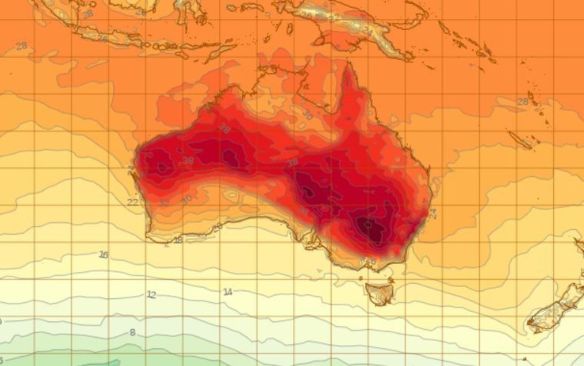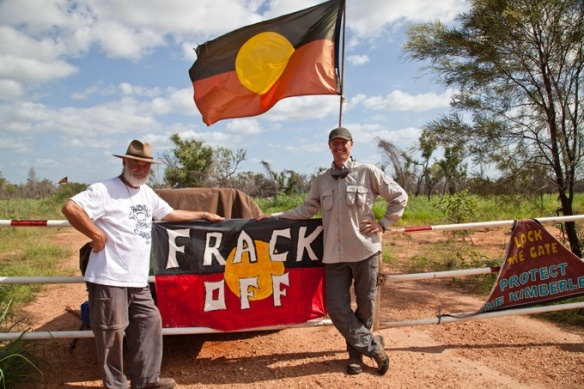
Renewable for Port Augusta, VIC
The State of Victoria announced the first big solar farms as well as auctions that will bring in 650 megawatts of new projects to kick off the legislative push on the Victorian Renewable Energy Target (RET).
Despite of the United States’ withdrawal from the Paris Climate Agreement in May this year, Australia re-confirmed its commitment to the accord by pursuing its RET. The country is optimistic to achieve its 2020 RET of 23.5 percent from renewable sources — equivalent to 33,000 gigawatt hours– with the recent announcement of a big solar farm and investment projects pouring in Victoria.
States throughout the country have been announcing new investments in renewable energy sources such as wind, solar and hydro-electric. RET is a legislated target aimed at reducing greenhouse gas emissions.
Earlier this week, Victorian Premiere Daniel Andrews announced the first big solar farms as well as auctions to bring 650 megawatts of new projects. This development is a vital stepping stone towards 10,000 jobs.
In June 2016, the state government committed to Victorian RET of 25 percent by 2020 and 40 percent by 2025–a plan that will deliver 5,400 megawatts of new wind and solar farms, create over 10,000 jobs, and attract as much as $9 billion worth of investment to the state.
Friends of the Earth (FoE) welcomes the announcement and said it is a vital step for the state towards its commitment to deliver 5,400 megawatts of solar and wind by 2025–taking Victoria to a significant 40 percent renewables.
“We welcome the Andrews government’s announcement of renewable energy auctions which demonstrate a strong commitment to grow renewable energy and create jobs,” said Pat Simons, FoE spokesperson.
The state government’s commitment to the VRET scheme emerged after a strong campaign that brought together wind workers, solar home owners, renewable energy businesses, unions, and community members who support climate change action.
The conservation group says the announcement is good news for Victorian householders and businesses–expected to save households $30 per year, medium businesses $2,500, and large businesses $140,000

Windpower generators as part of RET.
RET on track
The Clean Energy Regulator said the momentum for renewables has been seen in the second half of 2016 and has continued into 2017. One-third of the total build required for 2017 achieved in the first three months of the year with a further 1074.5 megawatts firmly announced by end-March.
Executive General Manager Mark Williamson earlier said this demonstrates that Australia is now in a strong position to meet the 2020 RET. During the Solar 2017 conference, Williamson highlighted that solar had played a large part in this exciting level of investment.
Solar projects have faster construction times and the lag between final investment decisions and commissioning is shorter. This means generation begins more quickly and certificates, which drive the RET, can be made available to the market sooner.
It wasn’t just large-scale utility solar which excelled in 2016, small-scale solar also had a big year, he said.
There are now more than 2.6 million Australian homes with small-scale systems installed. This is generating or displacing 10 million megawatt hours of electricity.
Large-scale RET
In July, the large-scale RET market data release is headlined by the accreditation of the Sunshine Coast Solar Farm.
The 15 megawatt solar farm will offset the Sunshine Coast Council’s entire electricity consumption at its facilities and operations. It is the second largest solar farm accredited in Queensland and the first solar farm to be built by an Australia local government organisation.
The same month also saw St Vincent’s Health take another step towards its goal of installing 2.708 megawatts of solar panels across 16 of its facilities in New South Wales, Victoria and Queensland. Health and aged care facilities in the Queensland regions of Toowoomba, Mitchelton and Lourdes were also accredited.
EnergyAustralia signed a power purchase agreement to buy 100 megawatts of the output from the proposed Riverina Solar Farm (expected capacity 150 megawatts). The project near Coleambally is being developed by Neoen and is aiming for financial close this year.
The continued investment in renewable energy and accreditation of renewable power stations means the 2020 RET is in reach.

PARIS, FRANCE – DECEMBER 12: Executive Secretary of the United Nations Framework Convention on Climate Change (UNFCCC) Christiana Figueres (L 2), Secretary General of the United Nations Ban Ki Moon (C), Foreign Affairs Minister and President-designate of COP21 Laurent Fabius (R 2), and France’s President Francois Hollande (R) raise hands together after adoption of a historic global warming pact at the COP21 Climate Conference in Le Bourget, north of Paris, on December 12, 2015. (Photo by Arnaud BOUISSOU/COP21/Anadolu Agency/Getty Images)
Australia committed to Paris Climate Agreement
Minister for Foreign Affairs Julie Bishop announced the Turnbull Government’s strong commitment to the Paris Agreement on climate change and the Doha Amendment to the Kyoto Protocol.
Both agreements, which formalised Australia’s 2030 and 2020 emissions reduction targets, were ratified by Australia on 10 November 2016.
Australia is among more than 140 countries that have ratified the Paris Agreement, which entered into force on 4 November 2016.
Australia’s 2030 target to reduce emissions by 26 to 28 per cent below 2005 levels is comparable with other advanced economies and will halve the nation’s per capita emissions.
Bishop said Australia has a strong track record on international emissions reduction targets. It beat the first Kyoto target by 128 million tonnes and are on track to meet and beat its second Kyoto 2020 target by 224 million tonnes.
The Turnbull Government is working to further reduce emissions through the Emissions Reduction Fund, the National Energy Productivity Plan, the phase down of hydrofluorocarbons and the Renewable Energy Target.
Bishop said the Turnbull Government is disappointed that the Trump has withdrawn from the international climate agreement.
Follow @rdelarosayoon on Twitter






























